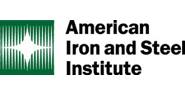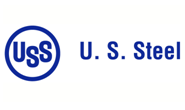Steel Mills

July 30, 2023
USS Expects Benefits from IRA, Infrastructure Despite Q3 Headwinds
Written by Michael Cowden
Steel prices and shipment volumes will probably be lower in the third quarter than they were in the second, U.S. Steel executives said.
But the Pittsburgh-based steelmaker expects to benefit over the longer term from three big trends: decarbonization, de-globalization, and digitization – all of which should encourage the reshoring of manufacturing to the US, they said.
![]() Q3 Outlook
Q3 Outlook
Shipment volumes are expected to fall in Q3’23 comparted to Q2’23. “That’s probably a little bit across the board, if you think about all four of our segments and how we’re seeing the order book shape up for Q3,” vice president of finance Kevin Lewis said.
U.S. Steel has four segments: flat-rolled, comprised of its integrated sheet mills; minimill, comprised of Big River Steel in Osceola, Ark.; Europe, its steel mill in Kosice, Slovakia; and tubular, which makes products such as oil country tubular goods (OCTG) used in oil and natural gas drilling.
U.S. Steel shipped 3.97 million tons in Q2’23, down 5% from 4.18 million tons in Q2’22, according to earnings figures.
The company also expects a quarter-over-quarter decline in prices in the third quarter across all four segments, chief financial officer Jessica Graziano said.
Note that spot prices in one quarter are often reflected in contract prices in the following quarter because of the way contracts are structured. High spot prices in Q1’23, for example, provide an uplift to earnings in Q2’23.
Infrastructure and IRA
Despite those short-term hurdles, U.S. Steel should profit over the long term from infrastructure spending, which should have a bigger impact on steel in the second half of the year, and the Inflation Reduction Act (IRA), which benefits steel more than its name indicates, company executives said.
They noted, for example, that the IRA includes $370 billion for climate-related initiatives, including money for industry to reduce CO2 emissions.
“I’d say the IRA is misnamed. It’s a manufacturing renaissance act. We applaud those that made it happen, and we look forward to the tailwinds we believe it will provide for the steel industry for years to come,” U.S. Steel president and CEO David Burritt said.
Roughly $220 billion in infrastructure spending has been announced, and the act included “Buy American” provisions that require steel used for infrastructure to be melted and poured in the US, company chief strategy and sustainability officer Richard Fruehauf noted.
“It takes time for these projects to get into the hands of the construction teams. But … we have increased confidence about this being a generational moment for steel,” he said.
Automotive
Another tailwind: U.S. Steel is gaining market share with automotive customers, Burritt said. “They’re approaching us. They want us to do more,” he said, adding, “I’d just say that the loudest voices don’t earn market share, but value-focused partners do.”
One selling point among automotive customers has been U.S. Steel’s investments in its operations. That includes it production of non-grain oriented (NGO) electrical steel at Big River.
U.S. Steel will be able to make thinner, wider, and bigger coils than its competitors – something that should be a selling point to electric-vehicle manufacturers across North America, Burritt said.
Operations
Big River remains on track to start up a second electric-arc furnace (EAF) sheet mill next to its existing one in Osceola, Ark., in mid-2024. “We’re past the peak execution risk phase and are approaching the equipment installation and commissioning milestones,” Burritt said.
Some of the company’s competitors, in contrast, “haven’t started construction,” he said.
Big River is already consuming material from a new, 500,000-ton-per-year pig iron caster at the company’s Gary Works in northwest Indiana.
It was less clear when an agreement with SunCoke Energy to produce pig iron at the company’s blast furnace in Granite City, Ill., might bear fruit.
U.S. Steel said last year that it had signed a non-binding letter of intent for SunCoke to take over the two Granite City blast furnaces and convert them to pig iron production.
“With SunCoke, we continue to have conversations with them. We think things are going well, and we hope to have a mutually acceptable agreement,” Fruehauf said.
Pig iron production at Gary Works and Granite City should allow U.S. Steel to source internally the high-quality scrap alternatives necessary to make more demanding products – such as the automotive steels – than are traditionally associated with EAF mills.
By Michael Cowden, michael@steelmarketupdate.com






